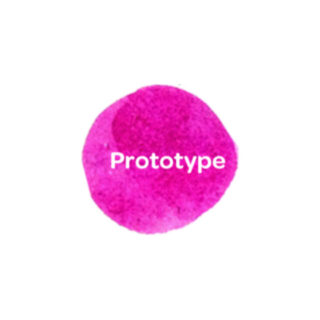Design Thinking: Prototype

Why Prototype?
In the Prototype step, students use the ideas they generated in the Ideate step to create a tangible solutions. This can take many forms, from physical models made out of cardboard or clay to digital mockups created on a computer. The purpose of creating a prototype is to test and refine the ideas generated during the Ideate step, so that students can arrive at a final solution that meets the needs of the user.
Prototyping is a critical part of the design thinking process because it allows students to quickly and easily test out their ideas without committing a lot of time or resources. By creating a rough prototype, students can identify potential flaws or areas for improvement in their solution, and refine it until they arrive at a workable solution.
Real World Example — Designing a Playground with Students
In the playground scenario we’ve been using throughout this series, students might use the Prototype step to create a small-scale model of their proposed playground. This would allow them to test out different features and configurations, and get feedback from their peers and teachers before investing time and resources into building a full-scale version.
Tips for Working with Students
- Encourage students to create a rough prototype first, without worrying about making it perfect. The goal is to test out ideas quickly and easily, so that they can be refined and improved upon.
- Provide students with a variety of materials to work with, including cardboard, clay, paper, and digital tools like SketchUp or Tinkercad.
- Encourage students to test their prototypes with their peers and teachers and to be open to feedback and suggestions for improvement.
Check Your Understanding
- What is the purpose of the Prototype step?
a. To generate ideas
b. To create a tangible representation of the solution
c. To test and refine the ideas generated during the Understand step
- Why is prototyping an important part of the design thinking process?
a. It allows students to quickly and easily test out their ideas without committing a lot of time or resources
b. It ensures that students arrive at a final solution that meets the needs of the user
c. It helps students generate a lot of ideas quickly
- When might a K-5 student use the Prototype step in the playground scenario?
a. To come up with a list of possible playground features
b. To create a rough sketch of their proposed playground
c. To create a small-scale model of their proposed playground
If you found this content helpful, you might enjoy this series of Imagineerz blog posts and check out Get Started with Design Thinking!


